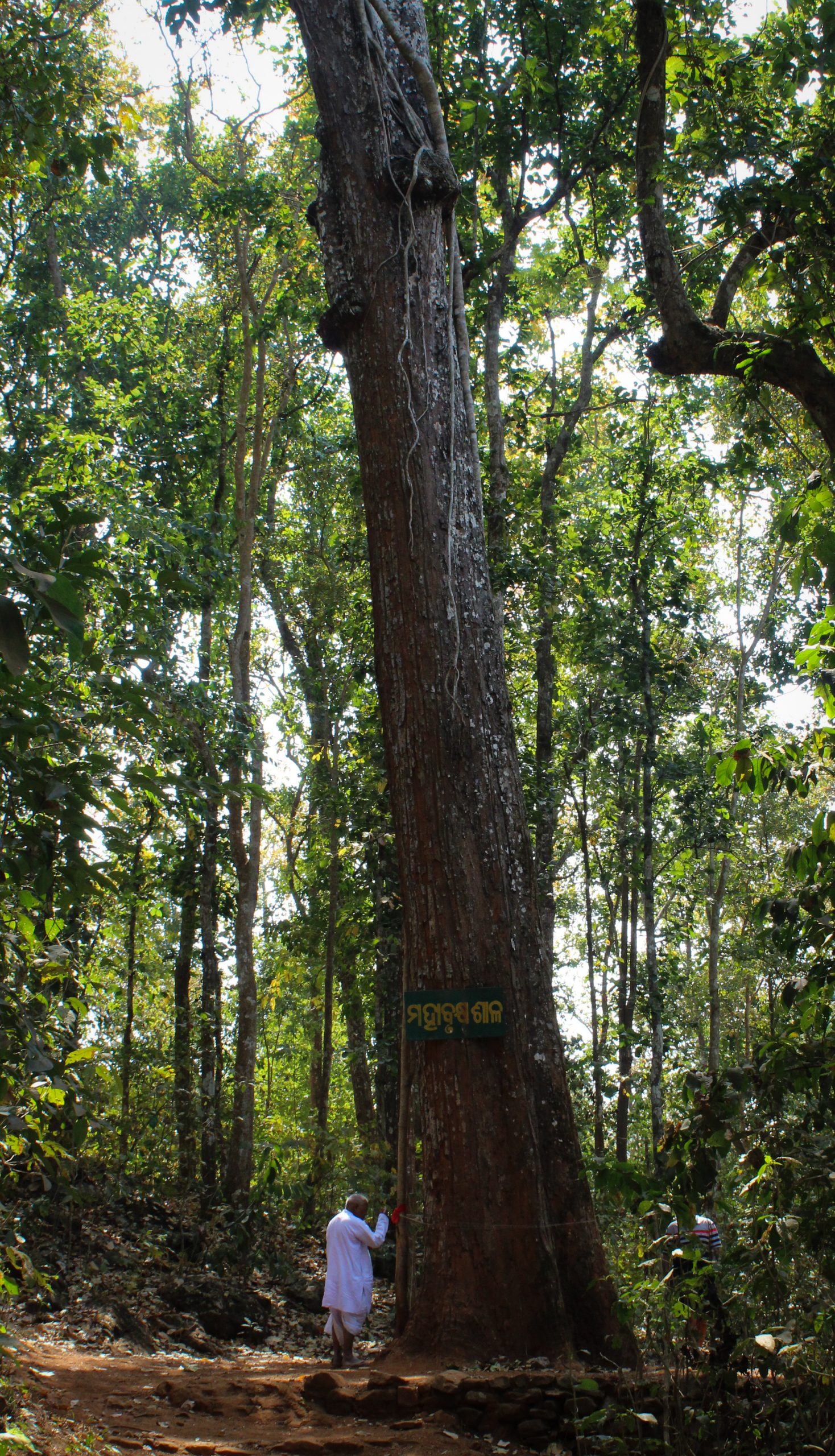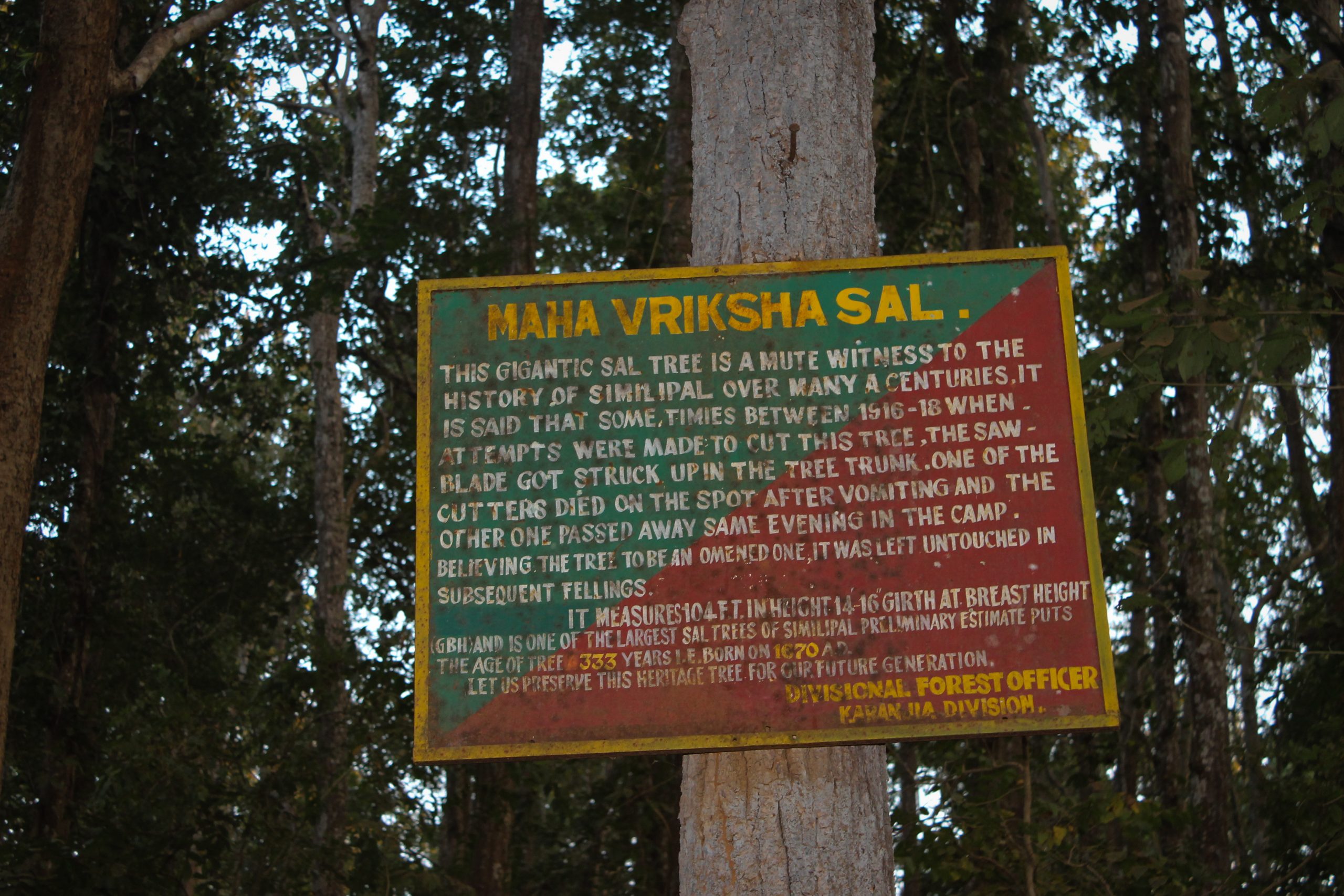Shyamhari Chakra
Bhubaneswar: As you enter Similipal National Park from the Kaliani check-post – 14 kilometres far from Jashipur town in Odisha’s Mayurbhanja district – the guide insists that you must look towards your right to offer your obeisance to the Tree-God of Similipal. And barely five minutes later, you come across a sign-board fixed to the tree with the above noted declaration by the Forest Department.
The sign-board further tells you a fascinating tale – that more than 100 years ago, sometime between 1916-18, when attempts were made to cut down the tree, the saw-blade got struck up in the tree trunk. One cutter died on the spot after vomiting and the other one passed away in the evening in the camp.
About 20 feet above the ground, a piece of iron pierced into the tree trunk – believed by the onlookers to be a portion of the broken saw-instrument – remains as testimony to the tale.
The forest department declaration, noted on the board, says that the MahavrikshyaSal (the grand Sal tree) is three and half a centuries old and above 100 feet tall. “Let us preserve this heritage tree for our future generation”, the declaration appeals.

As you halt for a while beside this centuries-old celebrated and majestic tree, you see the locals perform pooja (worship) of the tree with sandalwood paste, vermillion and flowers or bowing down to it while passing by.
Elaborates Dr. Tarun Kumar Ojha, a key-member of the Mayurbhanja Chapter of INTACH (Indian National Trust for Art and Cultural Heritage)who highlighted the heritage tree by writing about it in prominent publications almost 20 years ago, “Call it myth or history, the grand old tree assumes enough significance, both at the local and the global levels that needs to be duly highlighted. Its tale tells how the innocent common people – the tribal in particular – had devised and followed their own ways of age-old nature conservation through nature-worship”, he analyses.
Presently the principal of Baripada College at the district headquarter town of Mayurbhajna, Dr. Ojha once took his students on a picnic to Similipal when he came across the tree and its touching story. “It has been more than 20 years. Since then, I have been visiting the site and during each visit I come across various versions of the story of the three from the locals that excites me the most.
The royal rulers of Mayurbhanja had granted lease to one Barua timber dealer company that had ordered its workers to cut trees. While cutting down this Sal tree, they found blood-red coloured fluid oozing out of the tree-trunk. Watching this, one of the two tree-cutters collapsed into death at the spot while the other died vomiting blood hours later in the village. Since then, the people stopped felling of the Sal trees,” he shared one of the versions of the story that he had heard about the Tree-God.
Spread over 2750 square kilometres, Similipal biosphere boasts of nature’s bounty with 1076 species of plants, 242 kinds of birds, 42 species of mammals, 12 rivers, many majestic mountain peaks and two unique waterfalls apart from the largest number of Sal trees that beckons large number of tourists and nature-lovers from far and wide. The Tree-God continues to be one of Similipal’s best kept mysteries.




